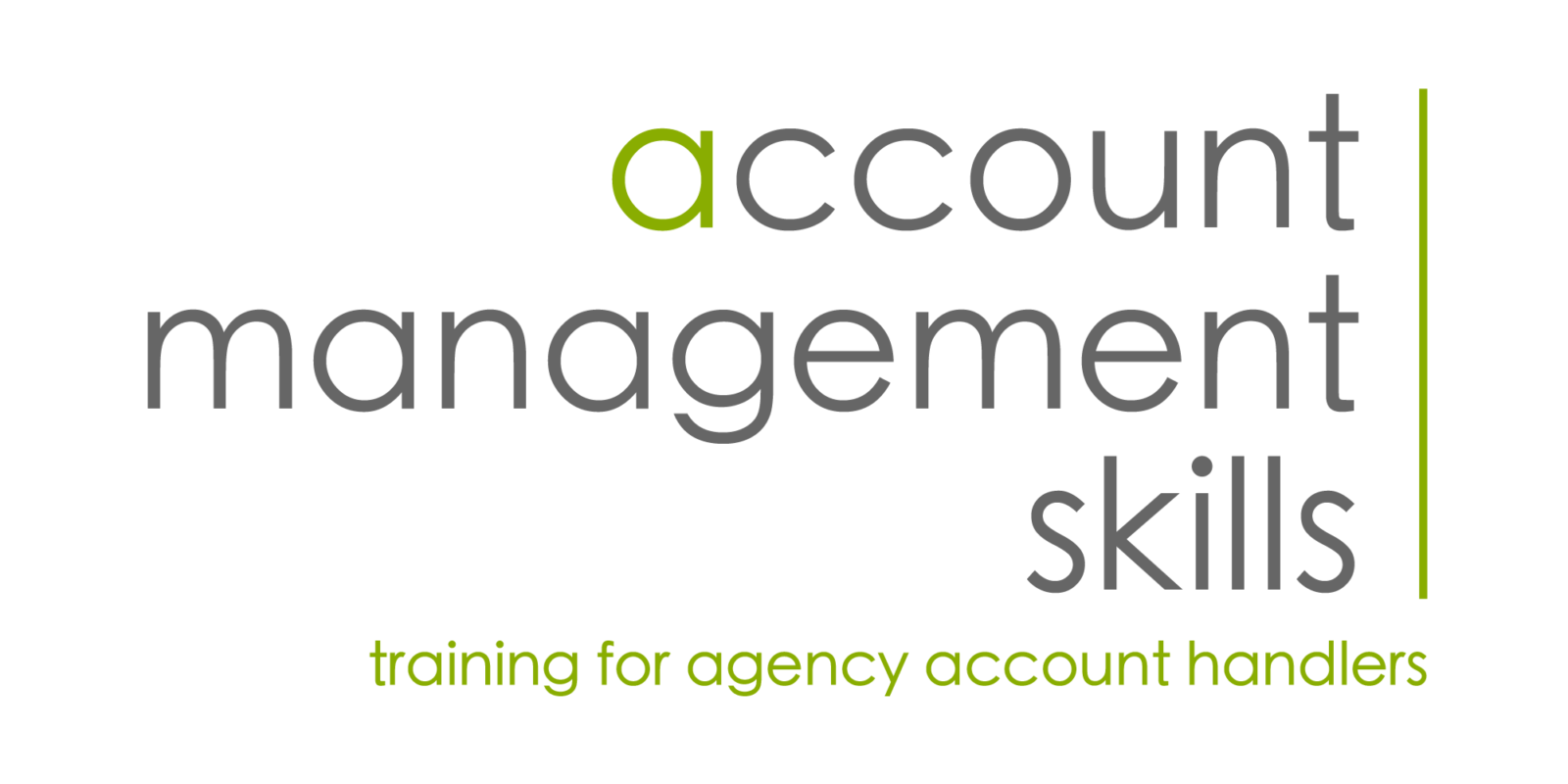
The account manager’s role is crucial to agency profitability.
As long as the agency takes on the right type of client at the right contractual terms, the job of staying profitable then passes over to the account manager.
Here are 8 things you can do right now to ensure the account stays profitable:
1. Understand the contract terms
Familiarise yourself with what’s been agreed so you understand expiry date/pricing terms/IP ownership etc.
Why?
It helps you navigate any client requests that are outside scope. You’ll know when the contract is to be renewed (will you need to run a formal performance evaluation / project review / contract renewal meeting?) and indicate whether there’ll be a re-pitch or if the contract is rolling. You’ll understand how to price the work e.g. varying hourly rates for each team member or a per project fee or value-based pricing? You’ll also understand IP (intellectual property) ownership terms e.g. will IP be passed to the client?
I was speaking to agency legal specialist firm Hybrid Legal and one very common example of where things can go wrong is when agencies use freelancers for work and don’t have robust freelancer contracts in place. It can cause issues around who owns the IP of the creative work and also if there are any discrepancies between what the client has asked for and what the freelancer has produced.
Also client contacts change and sometimes new clients take over and are unfamiliar with the terms originally signed by a previous colleague e.g. they may want more than was originally in scope for a retainer agreement and it may be grounds for a re-negotiation.
2. Have a (preferably co-created) mutually agreed written brief
(Easier said than done you may say!). The signed written brief is the most important contractual document for the client and agency. It’s the touchstone against which the agency’s work will be evaluated.
Why?
However efficient you are at getting the project done, the inevitable question is ‘does the work meet the brief?’. Without a written brief there’s nothing to stop a client telling you what you’ve produced doesn’t meet their expectations…… or they just don’t like it.
Ideally you co-create the brief with the client. Time invested in this step will save time and money later down the line. What’s important here is that if the client disputes any aspect of the work produced, it’s essential you have something in writing to point back to. If you accept a verbal brief under the illusion that ‘it’ll save time’ you’ll pay the price heavily when you have to re-do work again. Plus the client gets annoyed because they said something you didn’t understand or misheard or they thought they said it but didn’t ;-).
3. Price the project sufficiently
Review past project reconciliations before repeating the same pricing for a similar project/deliverable and adjust the price accordingly.
Why?
You can see how other similar projects have gone over budget e.g. is there always consistently more account management time spent than originally estimated for? If you can see you’re consistently going over budget for similar projects but are continuing to price the same way, the project’s profit will inevitably be affected. It also puts unrealistic expectations on the team.
4. Ensure the client knows the number of rounds of amends that are in and out of scope
Be crystal clear about this at the beginning of the project (talk through the project scoping document or estimate/timeline with the client so they understand what’s been included). Then you can refer back to the document when the client asks for ‘a few more changes’.
Why?
In the inevitable back and forth of project iterations the client can easily lose sight of how many versions they’ve reached. If you’re explicit about the number of rounds of amends in scope from the beginning, the client will be expecting to pay additional charges if they want to make further changes (expectation management is a key skill for an account manager).
Your role as the account manager here is to
a) Tell the client clearly and have it documented in the scoping document
b) Monitor how many rounds have been carried out (and keep reminding the client as you go through the project)
c) Point out that there may be additional charges incurred if it looks like the client may want to make further changes outside the agreement (where it can get problematic is if the client thinks the work hasn’t met the brief and therefore may expect the agency to incur the cost of making further changes – refer back to point 2 above about having a co-created written brief).
5. Ask the client how long they need for their internal review process & who’ll be involved
Build sufficient time into the timeline & ask for one person to consolidate feedback.
Why?
Not allowing the client a realistic amount of time to review the project internally puts them under pressure. Similarly any unexpected decision makers making changes at the eleventh hour kills profitability. Therefore it’s important to understand the client’s internal review process. For example with pharmaceutical clients they have medical, legal and regulatory departments that all need to sign-off any work – what happens if one of those departments isn’t available or is very busy and needs additional time to sign it off?
Pre-empting time needed in advance helps you create a realistic timeline that’s been discussed and agreed with the client.
6. Involve all project team members in scoping & keep them updated
Find out how much time each person involved in the project needs to complete their part. Have regular update meetings with all the team members involved.
Why?
Scope creep can happen when the whole team aren’t involved/kept updated with scoping and don’t understand their role/timings/number of hours allocated/amends. For example, one agency was using a freelancer and they hadn’t briefed them thoroughly. They’d allowed a handful of hours and the freelancer logged a day’s worth of work. This lead to an awkward conversation about how long the freelancer had took and who was going to foot the bill. Not involving team members from the start can lead to mismatched expectations and ultimately inefficiency.
7. Ask what’s driving the deadline (if unclear)
It’s important to know whether the deadline for the project’s delivery is movable e.g. a website company policy update with no set go live date or is set in stone e.g. an interactive panel display for a conference. So always ask the client what’s driving their deadline (if it’s not clear e.g. a publication deadline).
Why?
If the project goes awry, knowing what’s driving the deadline will be useful because you’ll know if there’s any flexibility and you’ll be able to determine what’s possible/what’s not for amending the delivery timings.
8. Update the client with progress & flag issues early
Always be one step ahead and keep your client updated on progress (often this is with a weekly status call/report). Chasing feedback from the client that’s due or checking in on your team for their updates is key to keeping things moving in the right direction.
Why?
Every project can experience set backs for a number of reasons, but you want to try to get ahead of any issues by keeping the client updated on progress “1. This is happening now, 2. This is what will happen next and 3. This is what we are aiming for” (now/next/future steps). If you go quiet the client thinks nothing is progressing. Delivering a profitable project is down to your efforts in following up and chasing anything that looks like it might slow things down.
How else can account managers control agency profit?
